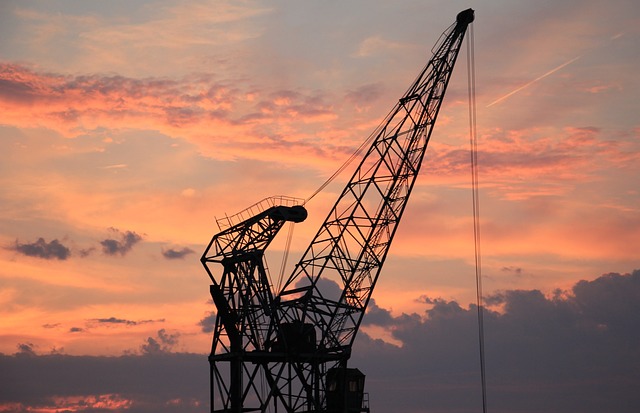In the realm of construction and development, the use of cranes is indispensable. However, the operation of cranes often extends beyond the boundaries of the site, encroaching on neighbouring properties or public spaces. This necessitates adherence to legal frameworks governing such oversailing activities. In this article, Crane Oversailing Licence, we take a look at the process and mechanism involved.
Free Initial Telephone Discussion
For a free initial discussion with a member of our New Enquiries Team, get in touch with us today. We are experienced in dealing with all the legal aspects of crane oversailing licences, and once instructed, we will review your situation and discuss the options open to you in a clear and approachable manner. Early expert legal assistance can help ensure you are on the best possible footing from the start and also avoid the stress of dealing with these issues on your own. Simply call us on 0345 901 0445 or click here to make a free enquiry and a member of the team will get back to you.
What is a Crane Oversailing Licence?
A Crane Oversailing Licence is a legal document that grants permission for a crane to oversail or overhang adjacent properties or public spaces during construction or development activities. It serves as a crucial instrument for maintaining harmony between developers and affected parties while ensuring compliance with legal requirements.
Importance of Crane Oversailing Licences
Obtaining a Crane Oversailing Licence is imperative for developers to carry out construction activities smoothly and lawfully. Failure to secure the necessary permissions can lead to legal disputes, delays, and potential financial liabilities. Moreover, overlooking the need for such licences may result in inconvenience or harm to neighbouring properties and individuals.
- Application Process: The process of obtaining a Crane Oversailing Licence entails several steps, including:
- Identifying the Need: Developers must assess whether their construction project requires a crane that will oversail neighbouring properties or public areas. If so, they should initiate the licensing process at the earliest opportunity.
- Consultation and Negotiation: Engaging with affected parties, such as neighbouring property owners or local authorities, is essential. This involves discussing the scope of oversailing, potential impacts, and negotiating the terms of the licence.
- Submission of Application: Developers must submit a formal application for a Crane Oversailing Licence to the relevant authorities or regulatory bodies. The application typically includes details of the construction project, proposed crane specifications, duration of oversailing, and mitigation measures.
- Review and Approval: The licensing authority reviews the application, considering factors such as safety, potential disruptions, and adherence to relevant regulations. Upon approval, the licence is issued, outlining the conditions and restrictions governing oversailing activities.
- Legal Implications: Compliance with Crane Oversailing Licences is legally binding, and any breach can have serious consequences. Developers must adhere to the terms and conditions specified in the licence, including timelines, safety measures, and compensation arrangements for any damage or inconvenience caused to affected parties.
Furthermore, developers should be aware of the legal rights and remedies available to affected parties in case of disputes or non-compliance. This may include seeking injunctive relief, compensation for damages, or pursuing legal action for negligence or trespass.
Blackstone Solicitors: Your Legal Partner in Crane Oversailing Matters
At Blackstone Solicitors, we understand the complexities involved in crane oversailing activities and the legal implications for developers and affected parties. Our team of experienced solicitors provides comprehensive legal assistance throughout the licensing process, ensuring compliance with regulatory requirements and safeguarding our clients’ interests.
From initial consultation to negotiation, application, and ongoing legal support, we offer tailored solutions to address the unique needs and challenges of each construction project. With a commitment to excellence and client satisfaction, we strive to deliver pragmatic and effective legal advice, enabling our clients to navigate the complexities of crane oversailing with confidence.
Conclusion
In conclusion, Crane Oversailing Licences play a crucial role in regulating construction activities involving cranes that encroach on neighbouring properties or public spaces. By obtaining the necessary permissions and complying with legal requirements, developers can mitigate risks, avoid disputes, and ensure smooth progress of their projects.
At Blackstone Solicitors, we are dedicated to providing expert legal guidance and support to developers and stakeholders involved in crane oversailing matters. With our expertise and proactive approach, we help clients navigate the legal landscape effectively, facilitating successful outcomes and protecting their interests.
How we can help
We have a proven track record of helping clients deal with crane oversailing rights and licences. We will guide you through the process and ensure all checks are carried out swiftly and efficiently and we firmly believe that with the right solicitors by your side, the entire process will seem more manageable and far less daunting.
How to Contact Our Commercial Property Solicitors
It is important for you to be well informed about the issues and possible implications of dealing with oversailing rights. However, expert legal support is crucial in terms of ensuring a positive outcome to your case.
To speak to our Commercial Property solicitors today, simply call us on 0345 901 0445, or click here to make a free enquiry. We are well known across the country and can assist wherever you are based. We also have offices based in Cheshire and London.
Disclaimer: This article provides general information only and does not constitute legal advice on any individual circumstances.



